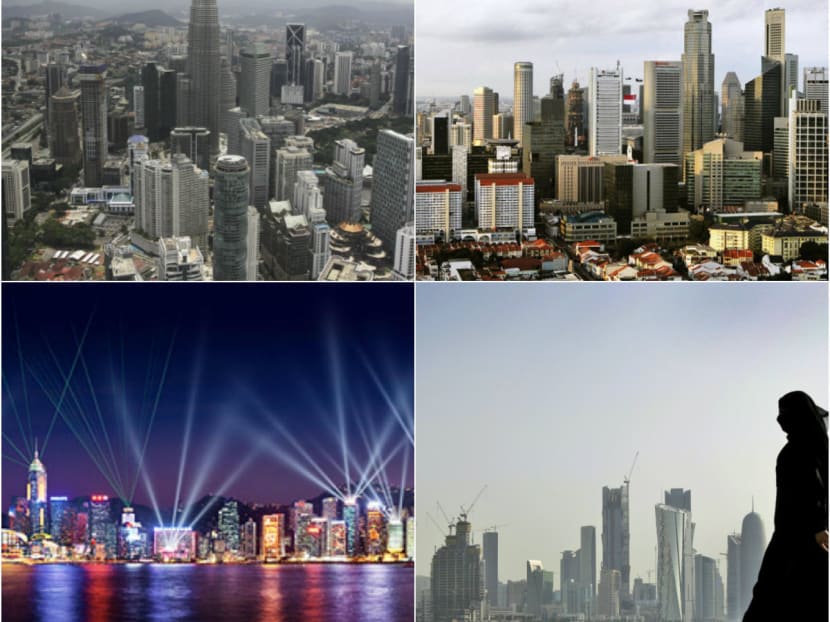Is urbanisation the cure for inequality?
KUALA LUMPUR — Dealing with population inequality? Malaysia thinks it might have the answer: Urbanisation.

Some say the perception is that even the harsh conditions in cities are better than life in rural villages.
KUALA LUMPUR — Dealing with population inequality? Malaysia thinks it might have the answer: Urbanisation.
Last year, the population in Klang Valley edged close to eight million, and, according to Putrajaya’s Performance and Management Delivery Unit (Pemandu), it is expected to surpass 10 million by 2020. By 2030, the extended metropolis beyond the capital could house almost half of Malaysia’s estimated population of between 33 to 35 million.
However, as many major cities across the world have found out, rapid urbanisation comes with its own set of problems ranging from inadequate housing to population density, which leads to an increase in the number of urban poor, and an adverse effect on the Gini co-efficient index which is used globally to measure inequality.
Over the years, as Malaysia’s urbanisation has taken on a more diverse life of its own, the Gini index statistics show that Malaysia’s income inequality gap is narrowing in urban centres.
Between 2012 and 2014, the Gini index in the urban population of Malaysia reduced from 0.417 to 0.391, signalling an improvement. The Gini index is measured between 0 and 1, with 1 denoting the highest ratio of inequality.
In the same two years, the incidence of poverty in urban centres decreased from 1 per cent to only 0.3 per cent.
The progressive numbers are replicated in the rural areas as well, but Mr Ziad Hafiz Razak who heads the Greater Kuala Lumpur and Urban Public Transport in Pemandu believes that continued urbanisation in Malaysia will further close the gap.
“In the long term, we believe urbanisation is a force to counter inequality,” Mr Ziad told Malay Mail Online in a recent interview.
Mr Ziad pointed out that Malaysia’s urbanisation stands out positively compared to those in many other big cities in the world.
“If you see cities like Rio de Janeiro or Mumbai, what happened was you had cities facing a rise in population, and they are not ready for it,” he said.
“The amount of slums in these cities are an indication of the inequality,” he added.
However, Mr Ziad said such shanty towns also point to the people’s belief that living in city slums beats living in the villages where they are from.
“Some of these slums in these cities, you see the people there have lived there for one or two generations. For example, you have the first generation being janitors and cleaners, and then their children can become lawyers,” he said.
“The same happened in the United States. You saw all the Latinos moving there to work as maids, but the children are professionals. Over time, this reduces inequality,” he added.
In Malaysia, the urban migration, while gravitating towards the capital, has witnessed a steady spread in the pores of development apart from Kuala Lumpur itself.
From 2012 to 2016, Kuala Lumpur’s population has increased from 1.71 million to 1.79 million. Meanwhile, the Greater Klang Valley population has been steadily averaging an increase of almost one million per year.
According to a World Bank report 2010, Malaysia has among the least dense urban spread in the East Asia region.
The urban density of 3,300 people per square kilometre is significantly lower than the regional average of 5,800 people per square kilometre.
“The good thing about Malaysia is we have clear pores of development that not everyone gravitates to Kuala Lumpur alone. We have Penang, we have Johor Baru, we also have urban centres in Kuching and Kota Kinabalu,” Ziad said.
“I would say there is enough diversity in our urban vibrancy. For example, in the 1980s, we saw the rise of many setinggan [squatters]. Now, many of them live in either low cost apartments, and through the second generation, own their own apartments. That shows inequality is eroding over time,” he added.
However, Ziad said that as urban migration continues to increase, it is up to the cities, especially Kuala Lumpur and its nine surrounding municipalities, to prepare and equip themselves for the population boom.
One of the main factors that the greater metropolitan area needs to improve on is urban public transportation.
“Of course, I would say we have a long way to go,” Ziad said, while describing urban public transportation as the “greatest engine” to spread development.
However, he said, improving public transportation is an ongoing process even for much older urban centres in the world such as London or New York.
“I don’t think there is ever going to be a point where we are going to say enough. For example, London is planning to improve its overground services even though the public transport there has been in place for decades. Similarly, Singapore is also improving their public transport connectivity,” he added.
Currently, Putrajaya has spearheaded the construction of several new light rail transit and mass rapid transit lines to increase urban connectivity.
Both the Kelana Jaya and Sri Petaling LRT lines had extensions that started running in June while Malaysia’s first Bus Rapid Transit (BRT) started operating from Sunway to Subang Jaya last year.
This December, the first phase of the MRT line starts operating, with LRT3 and MRT2 already announced and set to start construction.
The current and future extensions will connect townships such as Puchong, Putra Heights, Subang Jaya, Bukit Jalil, Kajang, Sungai Buloh, Bandar Sunway and also Putrajaya. MALAY MAIL ONLINE






